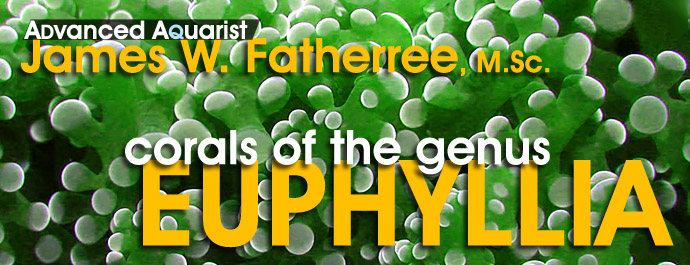
There are several species of stony coral belonging to the genus Euphyllia available to hobbyists, which are a popular bunch for good reasons. These corals can be very attractive, can grow to large sizes, and can thrive in aquariums with acceptable water quality, lighting, and flow. Many can even touch each other without doing any damage, meaning several specimens can be arranged together to make a unique display. However, there are some downsides to euphyllid ownership. So, I’ll give you some information about the species in the genus, how to care for them in aquaria, and some of the problems they can have, or pose.
Euphyllia Species
Euphyllia ancora
This species, known to hobbyists as the hammer coral, is found in the waters of the northern Indian Ocean, the central Indo-Pacific, Australia, Southeast Asia, southern Japan and East China Sea, and east as far as Papua New Guinea and the Solomon Islands (Turak et. al. 2008a). It has especially long tentacles when extended, like many other large-polyp stony corals, but they’re tipped with sausage, anchor, or hammerhead-like knobs, which is where its common name comes from. It typically comes in various shades of brown and fluorescent green with the tentacle tips often being lighter or different colored, but occasional specimens may be pinkish, orangish, or bluish. It also has a curving, wall-like (flabello-meandroid) skeleton. Note that this species is also called the anchor coral at times, but I’ll address this second name below.
Euphyllia paraancora
This species, known to hobbyists as the branching hammer coral, is found In the waters of the central Indo-Pacific, west Pacific and central Indian Ocean (Turak et. al. 2008b). It also has especially long tentacles that are with tipped anchor or hammerhead-like knobs, and also typically comes in various shades of brown and fluorescent green, with the tentacle tips often being lighter or different colored. Specimens bearing tentacles of other colors can be found at times, too. However, this species has a branching (phaceloid) skeleton rather than a flabello-meandroid skeleton.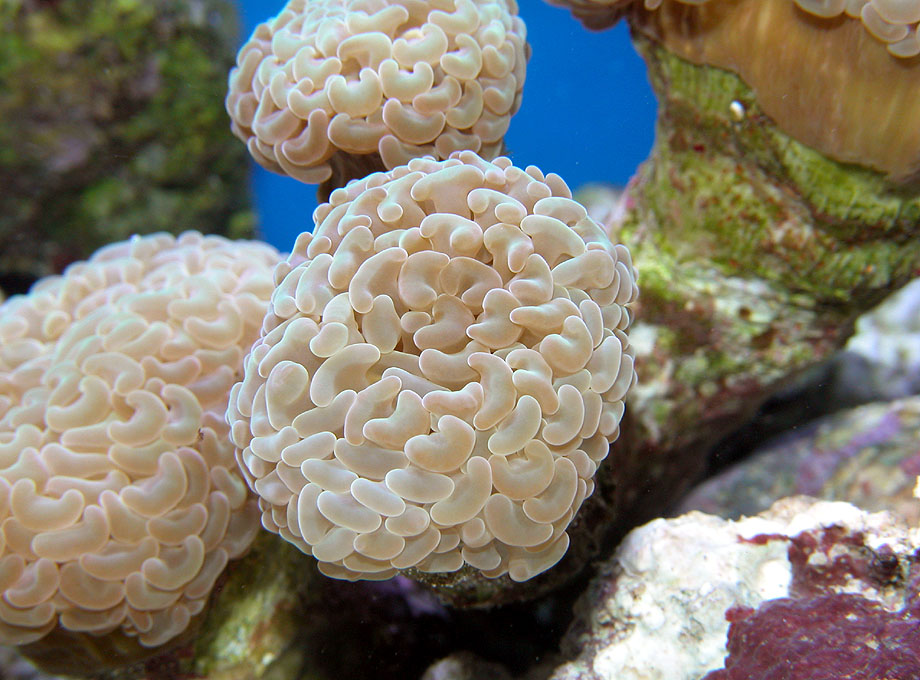

The branching hammer coral, E. paraancora, with its tentacles retracted, revealing that it has a branching skeleton.
Euphyllia divisa
This species, known to hobbyists as the frogspawn coral, is found In the waters of the central Indo-Pacific, Australia, Southeast Asia, southern Japan islands and East China Sea, the Solomon Islands, Fiji, and Palau (Turak et. al. 2008c, Randall 1995). It also has very long tentacles when fully extended, but rather than end with little hammers, they’re covered with short branches that are tipped with small rounded knobs. The tentacles are sometimes almost clear, but are typically various shades of fluorescent green and brown like those of E. ancora, with the knobs on the tentacles being lighter/different colored too, often being cream colored. It also has a flabello-meandroid skeleton.
Euphyllia paradivisa
This species, known to hobbyists as the branching frogspawn coral, is found in the waters of the central Indo-Pacific and American Samoa (Turak et. al. 2008d). Like E. divisa, it also has very long tentacles ending with numerous knob-tipped branches and comes in the same colors. But, it has a phaceloid skeleton.
Euphyllia glabrescens
This species, known to hobbyists as the torch coral, is found in the waters of the Gulf of Aden, north and west Indian Ocean, Arabian/Iranian Gulf, central Indo-Pacific, Australia, Southeast Asia, southern Japan and East China Sea, southwest Pacific, Micronesia, American Samoa, and rarely in the Red Sea (Turak et. al.2008e). Like the others, this species has long tentacles when extended, which are typically brown or fluorescent green. However, the tentacles aren’t as fancy as those of the above species, as they end with a simple, small, rounded tip. The tips are typically lighter/different in color though, usually being cream. Its skeleton is also phaceloid in form.
Euphyllia paraglabrescens
This species, which would likely be called a torch coral, has a scattered distribution In the waters of the Indo-West Pacific, being found in the Philippines, Papua New Guinea, Japan and the East China Sea. It is “extremely rare” in all locations except in Ôjioya Port, Tanegashima, which is the only place where it has been found in Japan. (Turak et. al. 2008f). According to (Veron 2000), its skeleton is nearly identical to that of E. glabrescens, but the tentacles are green or gray and relatively short. Despite finding several pictures of specimens identified as E. paraglabrescens online, considering its rarity, and after looking at the pictures presented in Veron (2000), I’m quite sure I’ve never seen this species offered in the hobby. In fact, every picture of an aquarium specimen I found online was clearly not E. paraglabrescens, but you can see some specimens that are by looking at the Corals of the World website (AIMS 2011a).
Euphyllia cristata
This species, better known as the grape coral, is found in the waters off east Africa, in the Andaman Sea, central Indo-Pacific, Australia, Southeast Asia, southern Japan and East China Sea, and the West Pacific (Turak et. al. 2008g). It typically has shorter tentacles than the species above (except E. paraglabrescens), and is usually green or pale gray with light-colored tentacle tips, which are also knob-like. However, occasional specimens are quite translucent or even clear, with only the tentacle tips being colored. Small solitary polyps are common, although some grow to larger sizes that are phaceloid in form. It’s distinguished from the other species primarily by the possession of large blade-like septal ridges that prominently extend from the top of the skeleton and can be clearly seen between the bases of the tentacles. And again, despite finding several aquarium specimens identified as E. cristata online, a couple were, but a couple dozen clearly were not. You can take a look at AIMS (2011b) online for some good examples of the species, though.
Regardless, this species has been very rarely offered in the hobby, but that may change soon. I just found that aquacultured specimens have become available from at least one vendor (Liveaquaria.com), and they look very nice.
Euphyllia yaeyamaensis
This species, which is also called frogspawn coral, is found in waters of the central Indo-Pacific, Southeast Asia, Japan and East China Sea, and the west Pacific (Turak, et. al. 2008h). It has shorter, fatter tentacles than E. divisa though, which are covered with very short (practically non-existent) branches tipped with small knobs. The tentacles are typically purple-gray, or sometimes greenish-gray or translucent, while the knobs are usually the same color or lighter. It also has a phaceloid form, and is very rarely seen in the hobby. Again, there are many aquarium-related photographs online of corals identified as E. yaeyamaensis, but as best as I can tell most all of them are E. divisa/paradivisa. Again, you can take a look at AIMS (2011c) online for some good examples of the species.
Euphyllia baliensis
In addition to all of these, there’s a new species of Euphyllia, which is being called a bubble coral. According to Adams (2012) this coral is found only off a single island near Bali and its branches are thinner than a pencil. The tentacles are rather short, and end with knobs that look like those of E. ancora/paraancora, being anchor or hammer-like. It’s also grayish brown in color, with some green in the center of each polyp, and has a phaceloid skeleton. You can take a look at Adams (2012) online for some pictures and a little more information.
Euphyllia fimbriata
And lastly, while doing some homework for this article I came across the name E. fimbriata, which I hadn’t heard in years. While this species is not listed in any of the aquarium literature I have or on the AIMS Corals of the World website, it is listed on the Integrated Taxonomic Information System, the World Register of Marine Species, and the Encyclopedia of Life websites as a valid species called the bean coral. I thought it was an outdated name that had been replaced with E. ancora, but the Encyclopedia of Life site says it is synonymous with Madrepora fimbriata. So, quite frankly I’m not sure what the deal is with this one. Oh, what fun taxonomy can be…
To add, I found information on the Animal World website indicating that E. fimbriata is a distinct species, is called the hammer coral, and is not found around Australia. It further explains that E. ancora is called the anchor coral, which lacks the hammerhead shaped tentacle tips and instead has semi-circular or sausage shaped tips. So, I had to dig some more, and then found that Borneman (1997) says that E. fimbriata is “a now extinct designation”. So, I give up! If anyone has any specific expertise on the subject, feel free to chime in.
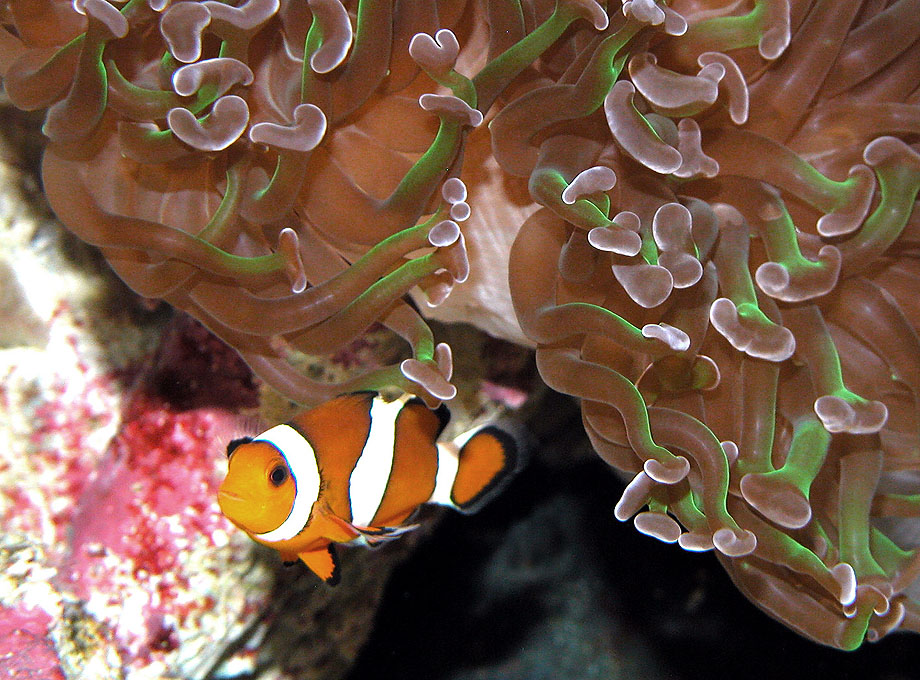
It is not uncommon for various specimens of Euphyllia to become substitute homes for clownfishes, especially if there’s no suitable anemone present for them to live in. Specimens may not extend their tissues/tentacles as much as usual when a clownfish first decides to “move in”, but they typically become accustomed to the activities of such fishes and return to their normal behavior, often in a matter of days. Small commensal shrimps may be found amongst their tentacles as well, and I’ve even found barnacles living in/on a few specimens, too. None of these seem to harm the coral in any way, though.
Euphyllia in the Aquarium
When keeping any of these species in aquaria, water quality should be within the limits of what is considered appropriate for a reef aquarium. Salinity should optimally be from 34 to 36 ppt (specific gravity of 1.025 to 1.027), temperature should be in the mid-seventies to low-eighties Fahrenheit, pH should be around 8.2 to 8.4, alkalinity should be kept between 7 to 12dKH, and calcium should optimally be 400 to 450ppm. Phosphate should be kept as low as possible, too.
They can be found in a wide variety of conditions, and I’ve seen various colonies in waters that were fairly dim and turbid to waters that were brightly lit and crystal clear. So, they aren’t too picky when it comes to lighting, unlike some other corals. With this in mind, aquarium lighting can be anything from a couple of high-output fluorescent tubes over a small aquarium, like a 20-gallon (which will likely end up being too small before long), up to intense metal halide or LED lighting. Basically, as long as the lighting is suitable for keeping a variety of corals, it will be fine for a euphyllid, too. You really can’t overdo it either, as long as a specimen is given plenty of time to acclimate to tank conditions.

I don’t know what this is, but it formed on an E. specimen in one of my own aquariums many years ago. It did get bigger or smaller at times, but persisted for over a year before disappearing if memory serves. I gave the coral to a friend about three years ago, but still see it in his aquarium regularly and the bubble has never come back. If anyone has any ideas, please let me know. No one that I’ve showed this to has had an answer.
Currents should be low to moderate, and turbulent flow rather than a constant stream from one direction is best. It should be at least strong enough to get the tentacles moving around a bit and keep detritus from settling on them, but it also should never be so strong that it prevents their expansion. None of these corals will open up and extend their tentacles if the current is too strong, as doing so could lead to tissue damage caused by any of the sharp edges found on their own skeleton.
If you want to feed any of these corals, they’ll be happy to receive essentially anything meaty that you offer. Anything from brine shrimp to bits of fish, squid, or clam meat works great when provided by hand, and I used to feed a large hammer coral with live guppies, too. I did “disable” them a bit before giving them to the coral, but once the tentacles had a hold on the little fishes, they were swallowed down quickly. You do need to be mindful of overdoing it though, as they don’t really require being fed anything if kept in a healthy and well-stocked aquarium, and too much added food can lead to increased nutrient levels in your tank which results in trouble from unwanted algal growth. Feeding may help them stay healthier and increase growth rates, but then again, I’ve seen many euphyllids absolutely thrive in aquariums without being fed anything at all.
Do note that these corals can get big too, with large aquarium specimens easily covering a space over a foot in diameter. They can keep going from there too, and they can do it relatively quickly. When cared for properly the branching species will not only add size to any existing branches, but will add more branches, too. Thus, they can also be propagated and used to make more specimens if you choose. It’s a simple task to cut or even break away branches from a colony, then move them to a new spot and fix them in place. If conditions are suitable, they’ll grow a whole new colony, which can be further broken up in the future, as well.
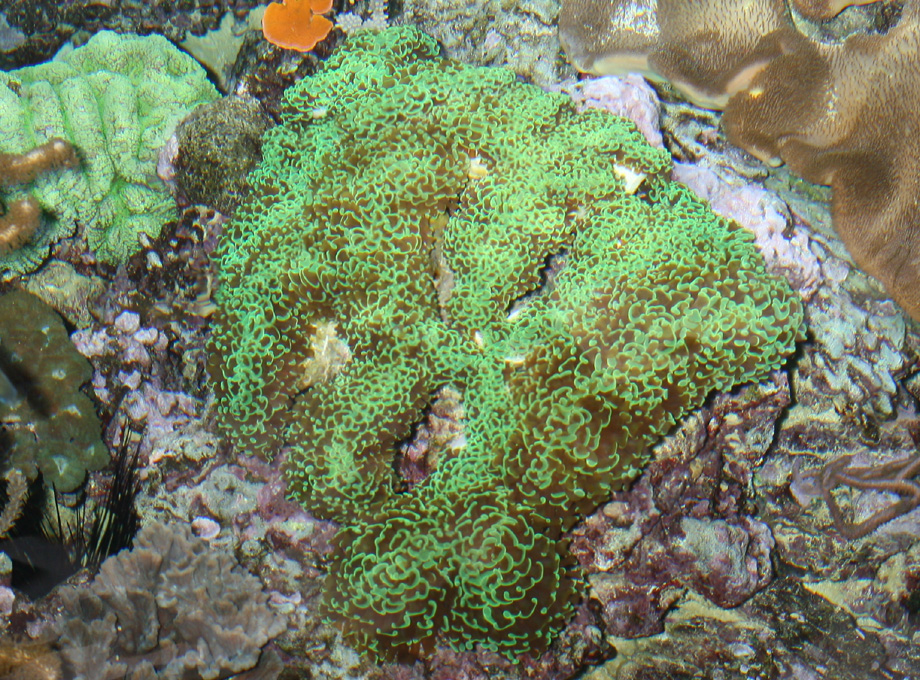
It could be a pro or a con depending on the surroundings, but these corals can grow to very large sizes and need lots of space.
They have also been known to reproduce via budding in aquaria, with small polyps emerging from the base of a colony. These can drop away from the mother colony to start new ones, so be on the lookout for them. These corals also have separate sexes and have been observed releasing sperm and eggs in aquaria, too (Delbeek & Sprung 1994). To add, Veron (1986) says they may also brood larva, and Fadlallah (1983) reported that they have released planula larva in the wild.
Potential Problems
While these corals are generally quite hardy once acclimated to aquarium life, there can be problems in the beginning. Euphyllids oftentimes do not ship particularly well, especially E. glabrescens and any specimens that have been collected by cutting them away from larger colonies. For reasons unknown, specimens of E. glabrescens often arrive from collection areas in bad shape much more frequently than the other commonly-offered species. Specimens of species having non-branching skeletons are sometimes collected by sawing or breaking off portions of relatively large colonies and may have problems, too. This is because there is no way to remove pieces of these colonies without cutting/tearing the coral’s flesh along with the skeleton.
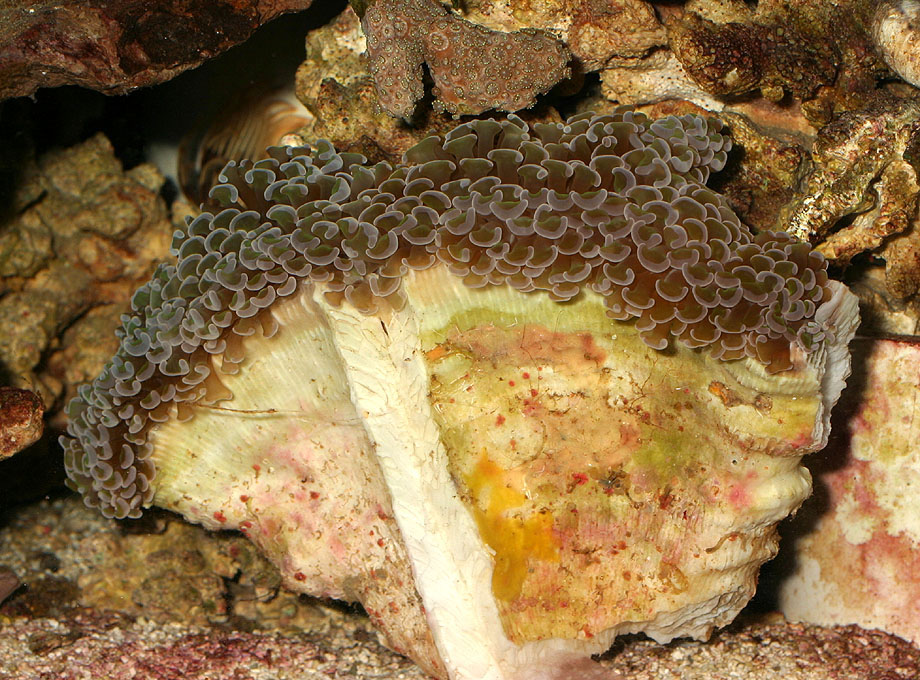
You can see that this E. ancora specimen has been cut/broken, which damages the coral’s tissue. Oftentimes such specimens will recover without issue, but sometimes they do not.
Likewise, even when non-branching specimens are collected whole, the sharp septal ridges at the top of the skeleton can cut/tear tissue if it is mishandled. Specimens of species with branching skeletons can suffer from the same thing during shipping, as well.
The most common result of such injuries is a brown-jelly infection, which is an attack on any injured flesh by an assortment of microorganisms. The coral’s tissues basically turn into a light brown glob of slime, which can spread quickly and destroy an entire non-branching specimen of any size in the worst cases. Conversely, if a brown-jelly infection strikes individual branches on a branching colony, those branches are doomed, but the others may be just fine. You can cut/break away any dead branches and typically spare the rest of them.
Specimens may suffer from tissue recession at times too, even when everything else is doing well. This is seen as the peeling back of the tissues from the skeleton, which can eventually lead to other health issues (such as overgrowth by algae), or even death. Poor water quality is very likely the cause in most cases, but like I said, sometimes this seems to happen when everything is apparently okay. Fortunately this is uncommon when specimens are cared for properly.
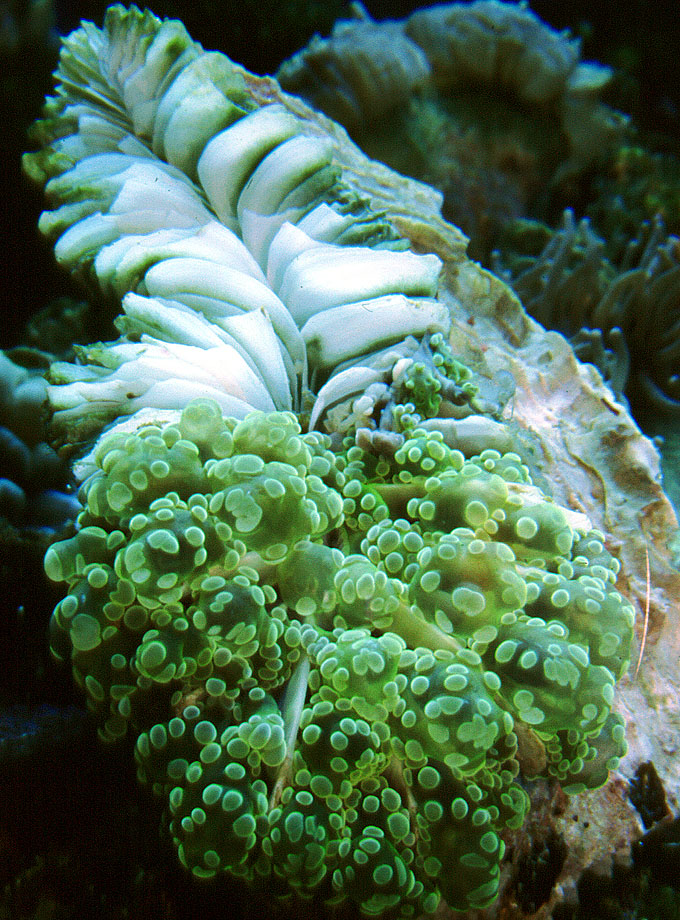
You can see that several of the sharp skeletal septa of this E. divisa specimen have been broken, which can easily injure any of these corals from the inside.
Other than that, it’s important to keep in mind that species bearing long tentacles can be quite dangerous to any other corals nearby. They have relatively strong stings, and are some of the only corals that can cause pain/injury when handled by some people. To add, many specimens will produce numerous sweeper tentacles that can greatly extend their reach. These specialized tentacles are much longer than the rest, and they carry a greater number of stinging cells, too. So, you should always try to avoid contact with their tentacles, handle them by the skeleton only if possible, and give them plenty of space in an aquarium so that they do not damage/kill other corals.
Also note that sweeper tentacles are most often produced when specimens are exposed to strong currents. Not when it’s strong enough to hurt them, rather when flow is tolerable but fast. Thus, you should try to reduce water flow over a specimen if any sweeper tentacles appear.
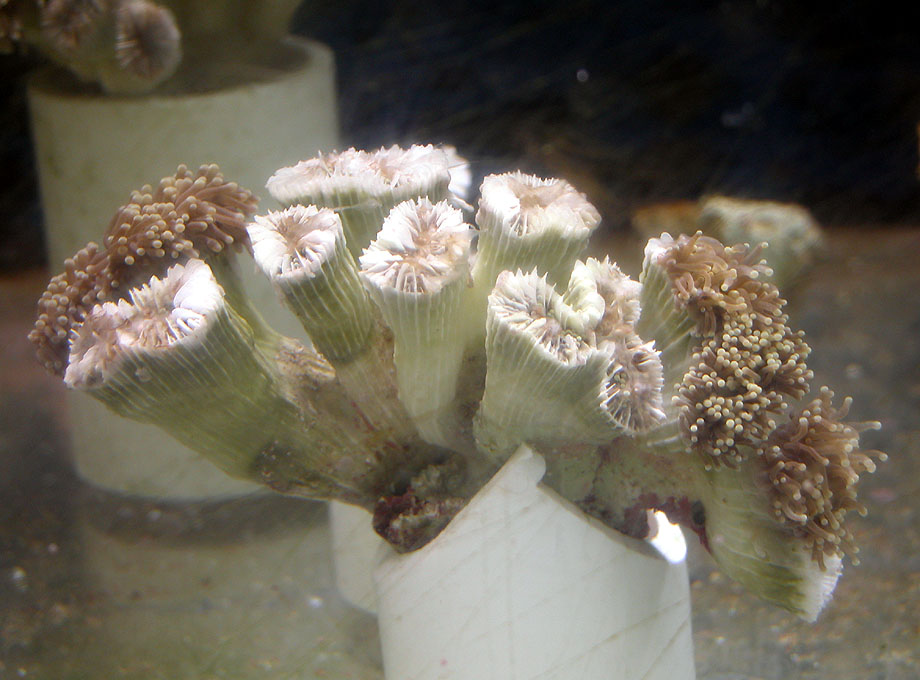
You can see that this E. glabrescens specimen has been devastated by a brown jelly infection, which has killed most of the polyps.
Borneman (2001) also mentions that the tips of sweeper tentacles may stick to the substrate and break away at times, which can then give rise to new colonies. And, these tips may also pinch off at times and drift around an aquarium where they can stick to other surfaces. Borneman suggests that this may be a novel means of asexual reproduction and/or a means of defense, as the tips are packed with stinging cells and can damage other corals they may come into contact with. While I was able to find a couple of forum posts indicating this has happened in a few hobbyists’ aquaria, I have to say that after being in the hobby for over 20 years I’ve never seen this happen, and don’t personally know of anyone that has, though.
Still, as I mentioned at the beginning, many euphyllid species can touch each other without issue. Oddly enough, specimens of E. ancora, E. paraancora, E. divisa, and E. paradivisa can be arranged so that they not only touch at times, but have their tentacles intermeshed with each other’s. So, it’s possible to create a very beautiful and unique setting in an aquarium if different species with different looks are placed together. Trying to do so with the other species is very risky, though. While a few hobbyists have successfully mixed specimens of E. glabrescens in with these others, this almost always ends badly. I don’t know of any cases of the remaining species being placed with those above either, and found nothing online suggesting it has been accomplished successfully. So, I wouldn’t try it unless you’re willing to take big chance and keep a very close watch for any troubles.
To finish, if you decide to get one of these, choosing a good specimen is an important first step. Any potential purchase should be looked over very carefully and avoided if there are any signs of trouble whatsoever. Brown jelly infestations can spread very rapidly, so even the smallest bad spot on a coral can quickly lead to the loss of a specimen and you should be particularly wary of non-branching specimens that have been cut/broken away from larger colonies.
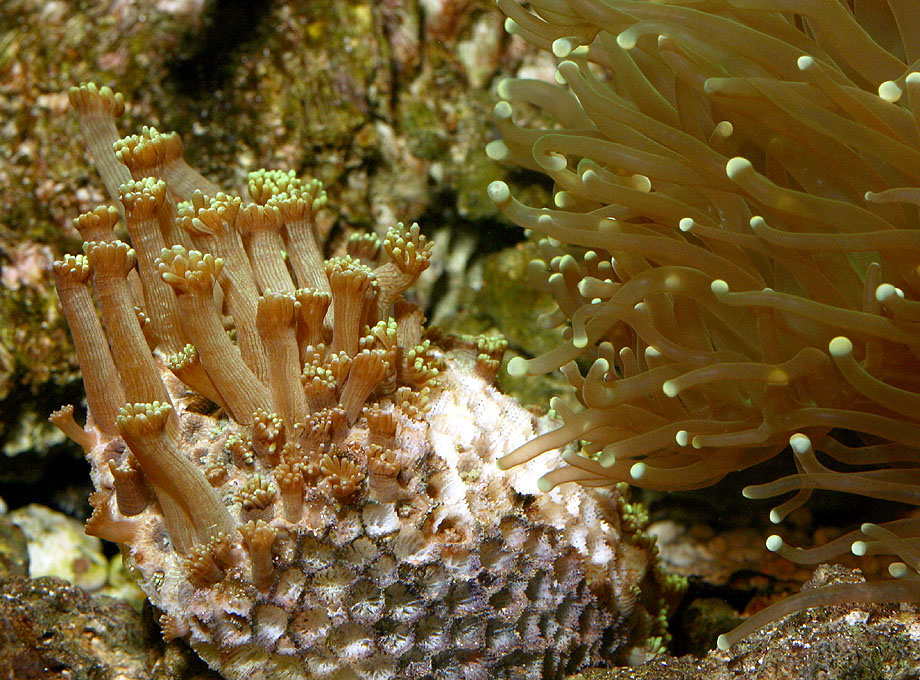
All euphyllids carry a strong punch when it comes to stinging, and they should be given plenty of room.
Also note that these corals often periodically retract their tissue/tentacles, even when healthy, and that a specimen being offered at a store may get much larger than it would seem. In other words, if you see a healthy looking specimen, but the tentacles are pulled in close to the skeleton, don’t forget that they may reach much further out once the coral is in you aquarium. So, you need to be sure you have the room to accommodate it, or don’t buy it.
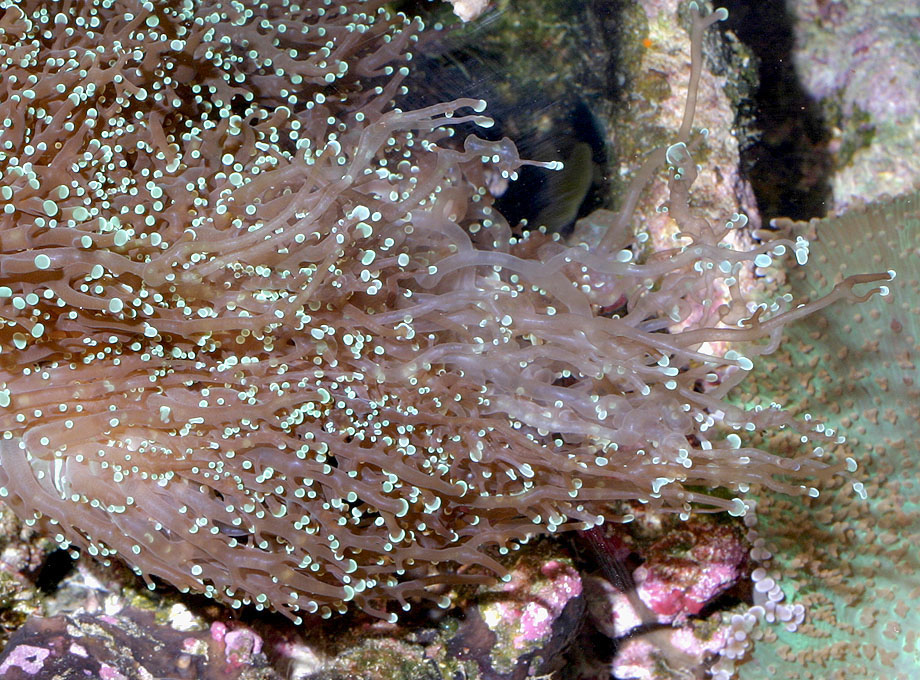
Here you can see E. divisa sending out a mess of long sweeper tentacles, which can severely damage neighboring corals.
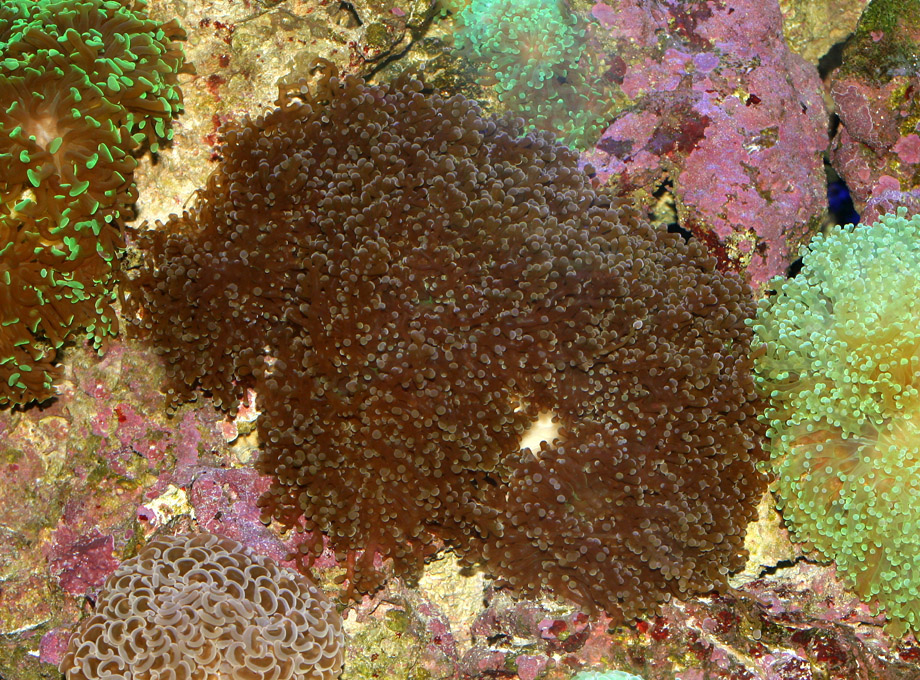
Specimens of E. ancora, E. paraancora, E. divisa, and E. paradivisa can be kept close together, as they do not sting each other.
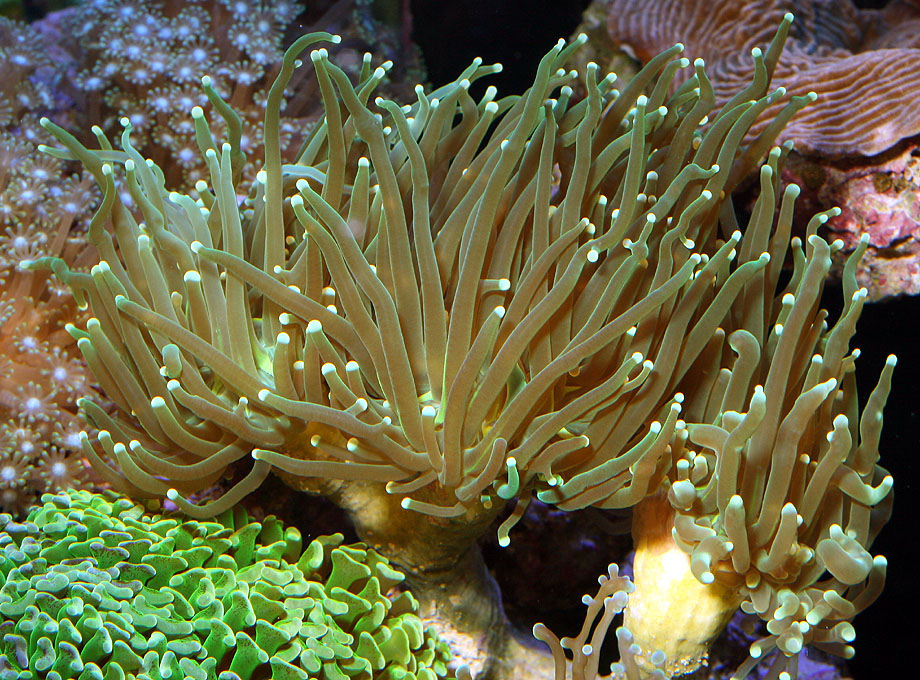
It is risky, but some hobbyists have succesfully kept E. glabrescens close enough to E. ancora, E. paraancora, E. divisa, and/or E. paradivisa for them to touch without damaging each other.
References
- Adams, J. 2012. Euphyllia baliensis is a new large polyp stony coral with extremely thin branches. Reef Builders. URL: http://reefbuilders.com/2012/09/17/euphyllia-baliensis/#ixzz27LMc8QyV
- Animal World, undated. URL: http://animal-world.com/Aquarium-Coral-Reefs/Hammer-Coral
- Australian Institute of Marine Science, 2011a. Corals of the World: Euphyllia paraglabrescens. URL: http://coral.aims.gov.au/speciesPages/species_metadata/0870/image#
- Australian Institute of Marine Science, 2011b. Corals of the World: Euphyllia cristata. URL: http://coral.aims.gov.au/speciesPages/species_metadata/0146/image#
- Australian Institute of Marine Science, 2011c. Corals of the World: Euphyllia yaeyamaensis. URL: http://coral.aims.gov.au/speciesPages/species_metadata/0419/view#
- Borneman, E. 1997. Sweeping Beauty: A tale of anchors, hammers, and other things. URL: http://www.reefs.org/library/aquarium_net/0197/0197_2.html
- Borneman, E. 2001. Aquarium Corals – Selection, Husbandry, and Natural History. Microcosm/T.F.H. Publications, neptune City, NJ, 464pp.
- Delbeek, J.C. and J. Sprung. 1994. The Reef Aquarium: Volume One. Ricordea Publishing, Coconut Grove, FL, 544pp.
- Encyclopedia of Life, undated. URL: http://eol.org/pages/1006629/names/synonyms
- Fadlallah, Y.H. 1983. Sexual reproduction, development and larval biology in scleractinian corals. A review. Coral Reefs, 2:129-150.
- Integrated Taxonomic Information System, undated. URL: http://www.itis.gov/servlet/SingleRpt/SingleRpt?search_topic=TSN&search_value=53640
- IUCN, 2012. IUCN Red List of Threatened Species. Version 2012.1. URL: www.iucnredlist.org
- Randall, R. H. 1995. Biogeography of reef-building corals in the Mariana and Palau islands in relation to back-arc rifting and the formation of the eastern Philippine Sea. Nat. Hist. Res. 3:193-210.
- Turak, E., Sheppard, C. & Wood, E. 2008a. Euphyllia anchora. In: IUCN 2012. IUCN Red List of Threatened Species. Version 2012.1. URL: www.iucnredlist.org
- Turak, E., Sheppard, C. & Wood, E. 2008b. Euphyllia paraanchora. In: IUCN 2012. IUCN Red List of Threatened Species. Version 2012.1. URL: www.iucnredlist.org
- Turak, E., Sheppard, C. & Wood, E. 2008c. Euphyllia divisa. In: IUCN 2012. IUCN Red List of Threatened Species. Version 2012.1. URL: www.iucnredlist.org
- Turak, E., Sheppard, C. & Wood, E. 2008d. Euphyllia paradivisa. In: IUCN 2012. IUCN Red List of Threatened Species. Version 2012.1. URL: www.iucnredlist.org
- Turak, E., Sheppard, C. & Wood, E. 2008e. Euphyllia glabrescens. In: IUCN 2012. IUCN Red List of Threatened Species. Version 2012.1. URL: www.iucnredlist.org
- Turak, E., Sheppard, C. & Wood, E. 2008f. Euphyllia paraglabrescens. In: IUCN 2012. IUCN Red List of Threatened Species. Version 2012.1. URL: www.iucnredlist.org
- Turak, E., Sheppard, C. & Wood, E. 2008g. Euphyllia cristata. In: IUCN 2012. IUCN Red List of Threatened Species. Version 2012.1. URL: www.iucnredlist.org
- Turak, E., Sheppard, C. & Wood, E. 2008h. Euphyllia yayamaensis. In: IUCN 2012. IUCN Red List of Threatened Species. Version 2012.1. URL: www.iucnredlist.org
- Veron, J.E.N. 1986. Corals of Australia and the Indo-Pacific. University of Hawaii Press, Honolulu, Hawaii, 644pp.
- Veron, J.E.N. 2000. Corals of the World, Vol. 2. Australian Institute of Marine Science, Townsville, Australia, 429pp.
- Wood, E.M. 1983. Reef Corals of the World: Biology and Field Guide. T.F.H. Publications, Neptune, NJ, 256pp.
- World Register of Marine Species, undated. URL: http://www.marinespecies.org/aphia.php?p=taxdetails&id=289216


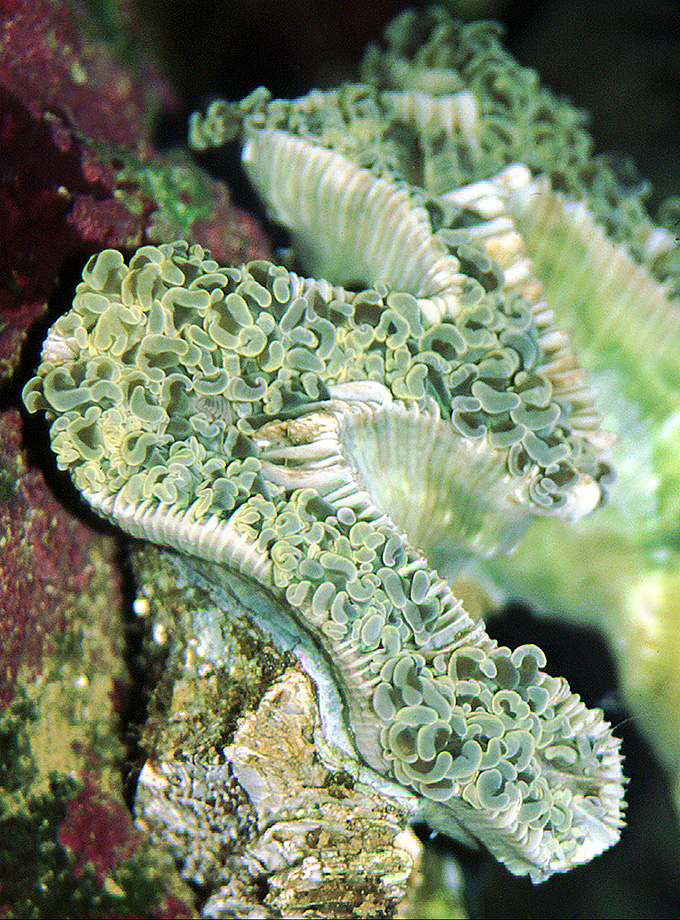
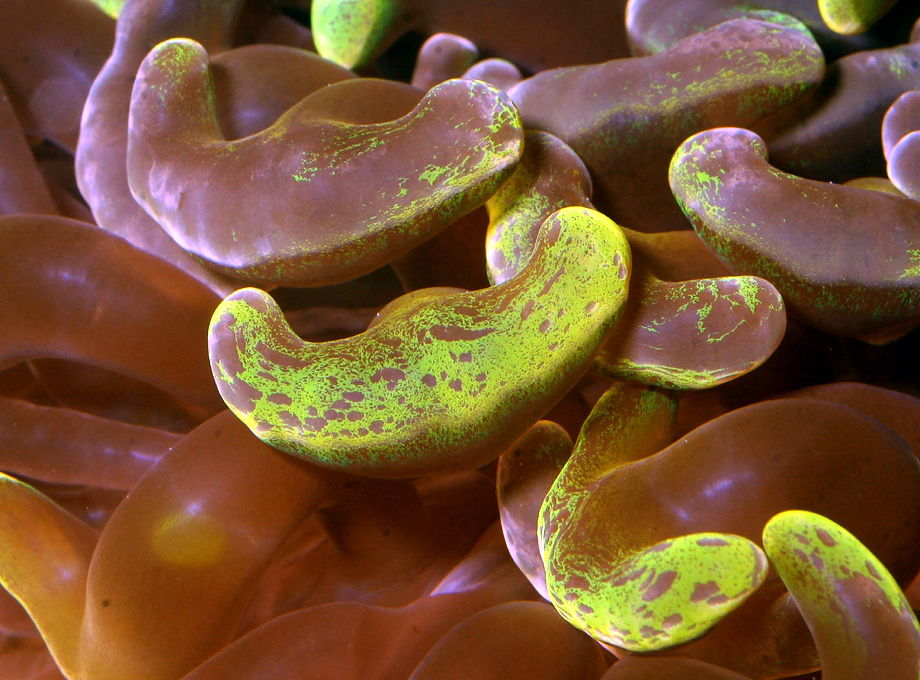
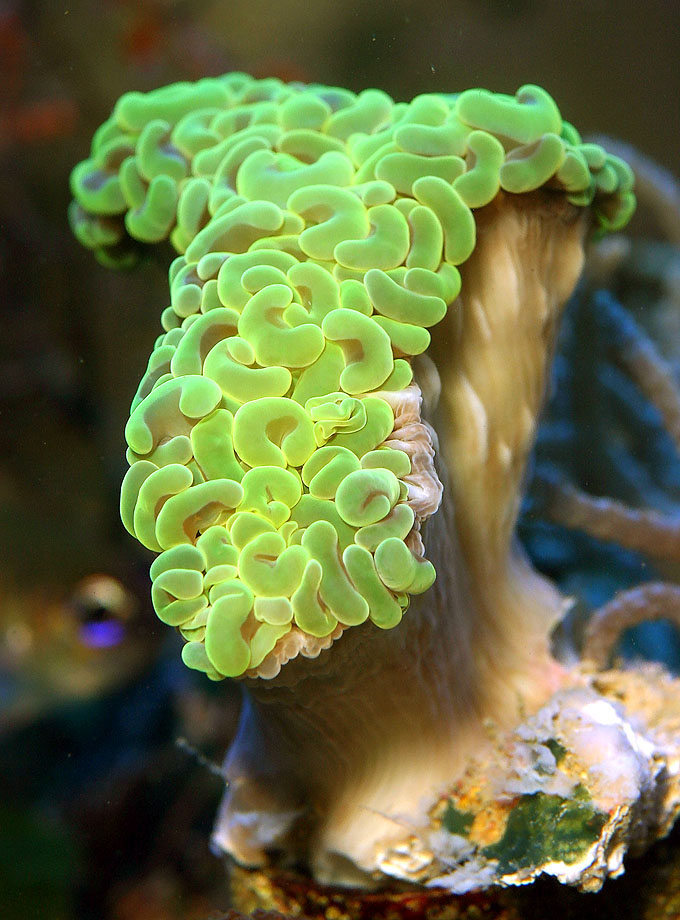
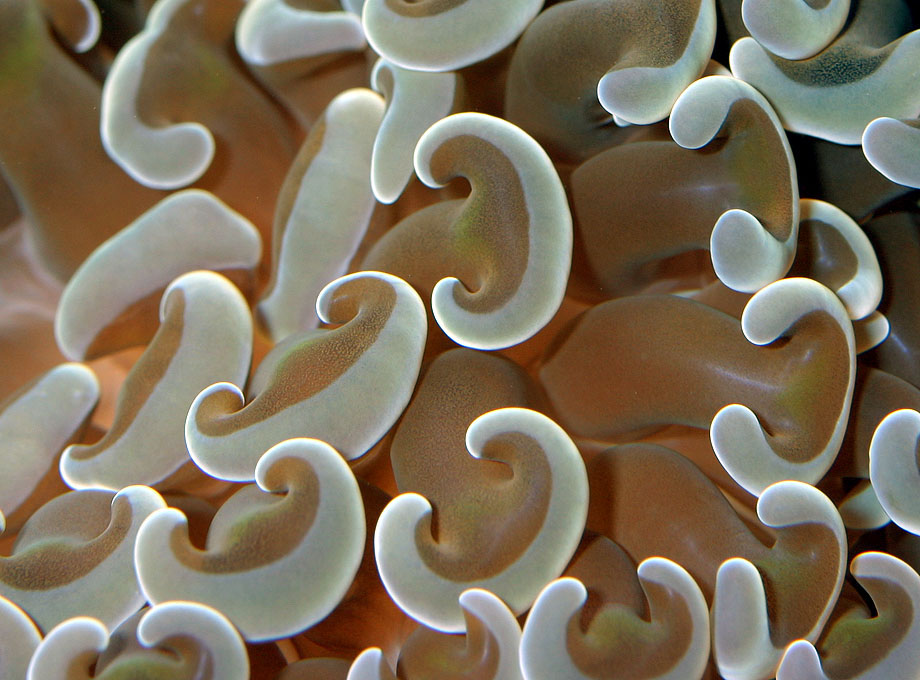

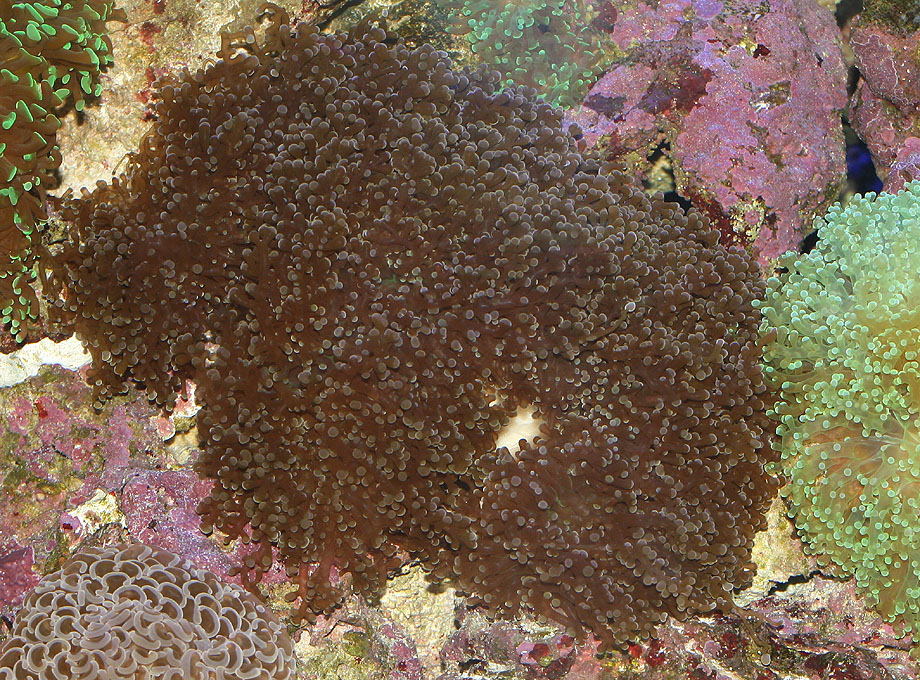
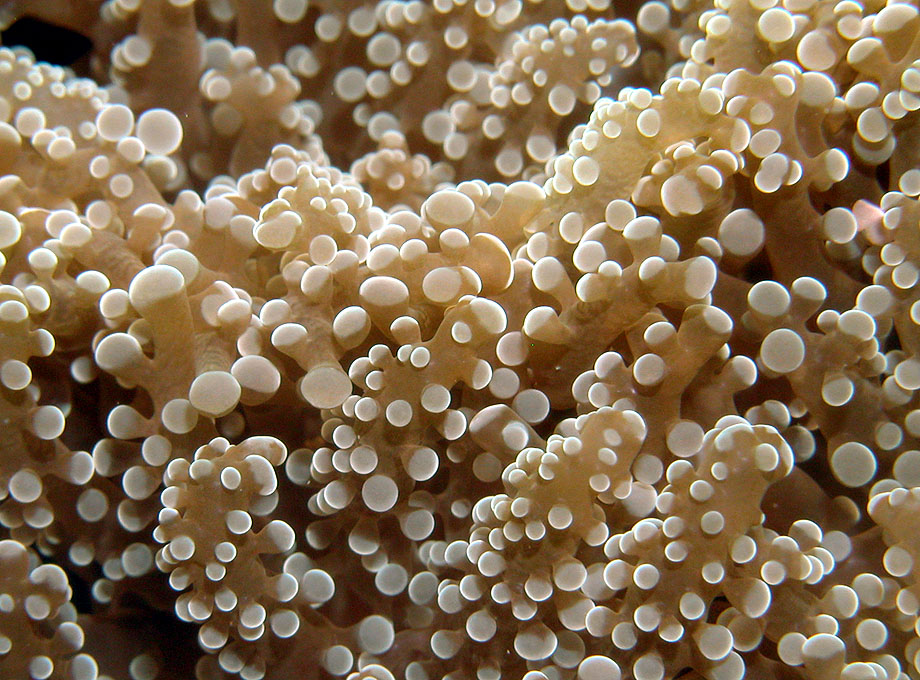
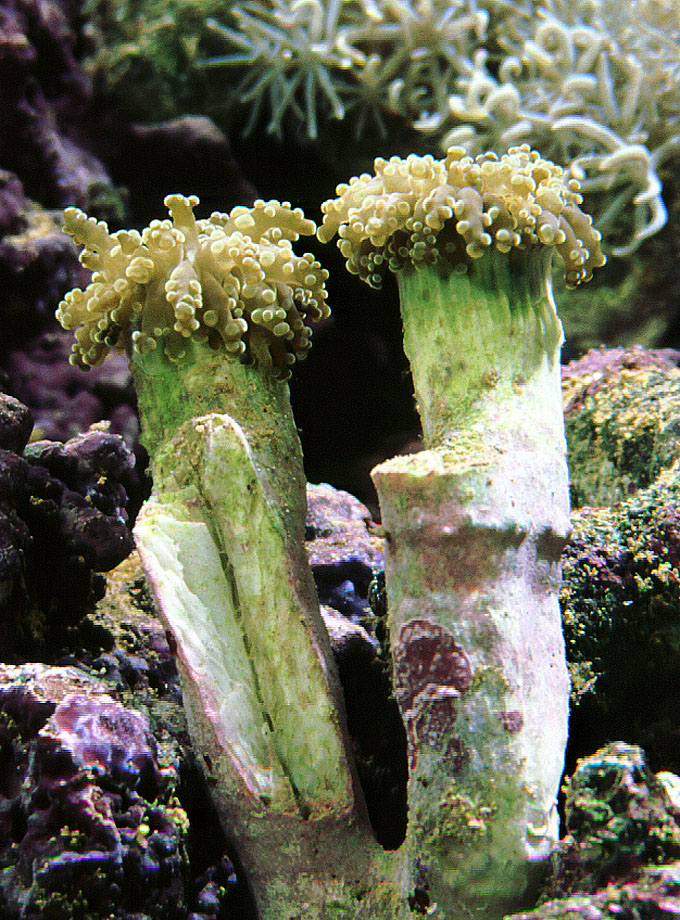
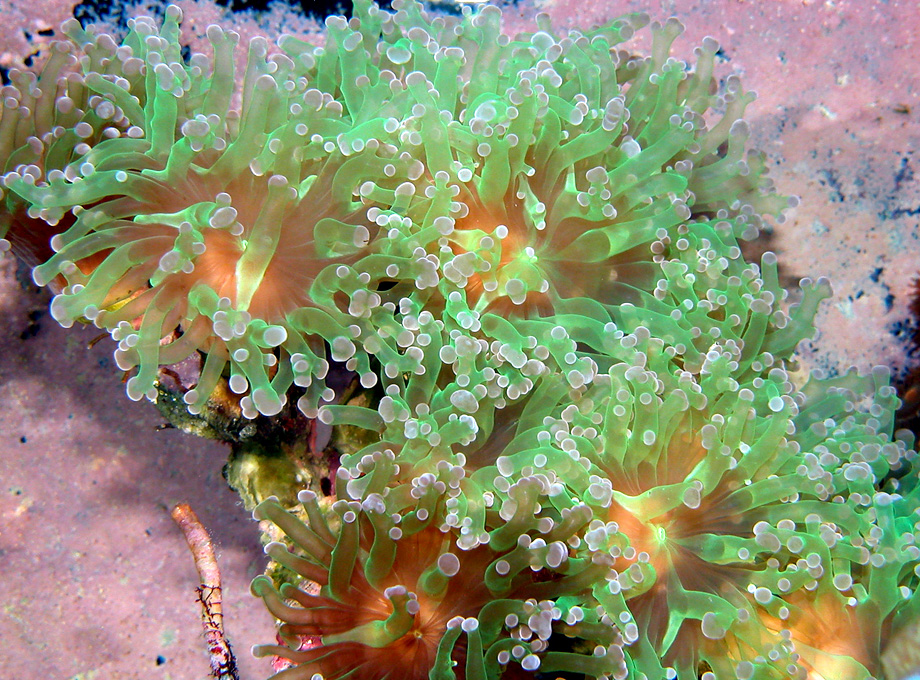
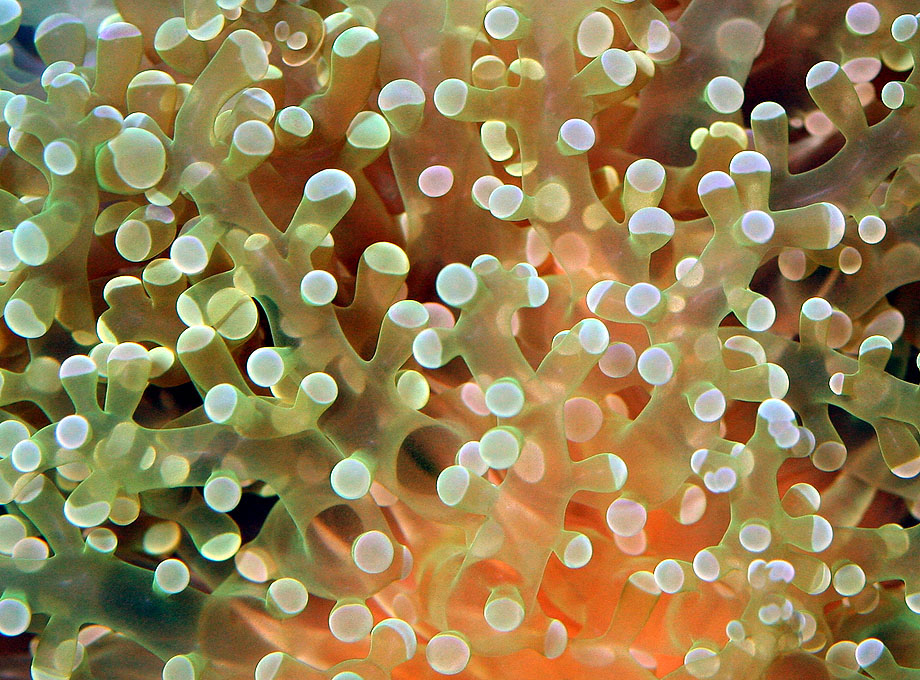
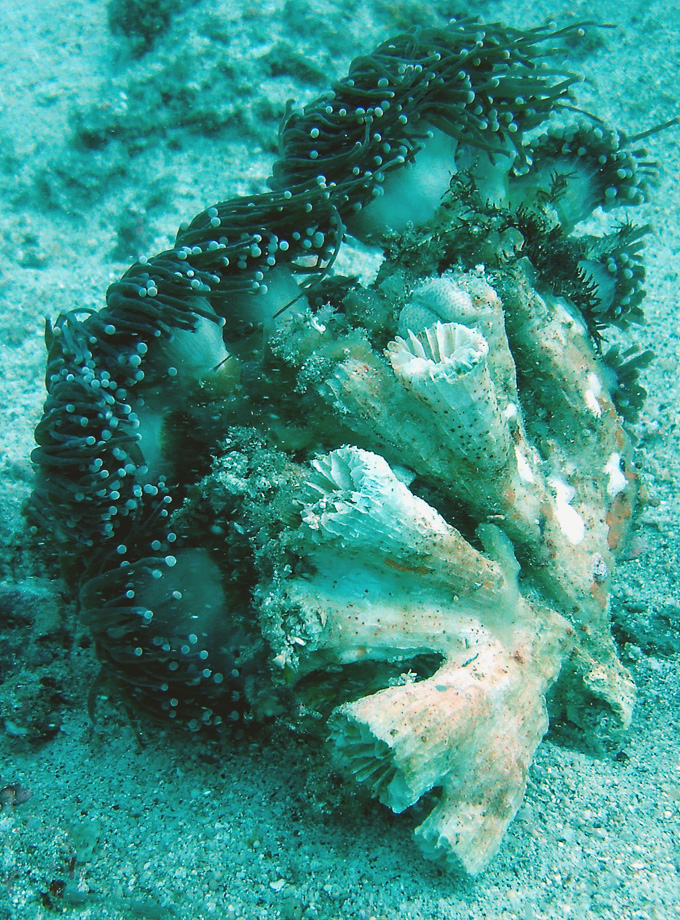
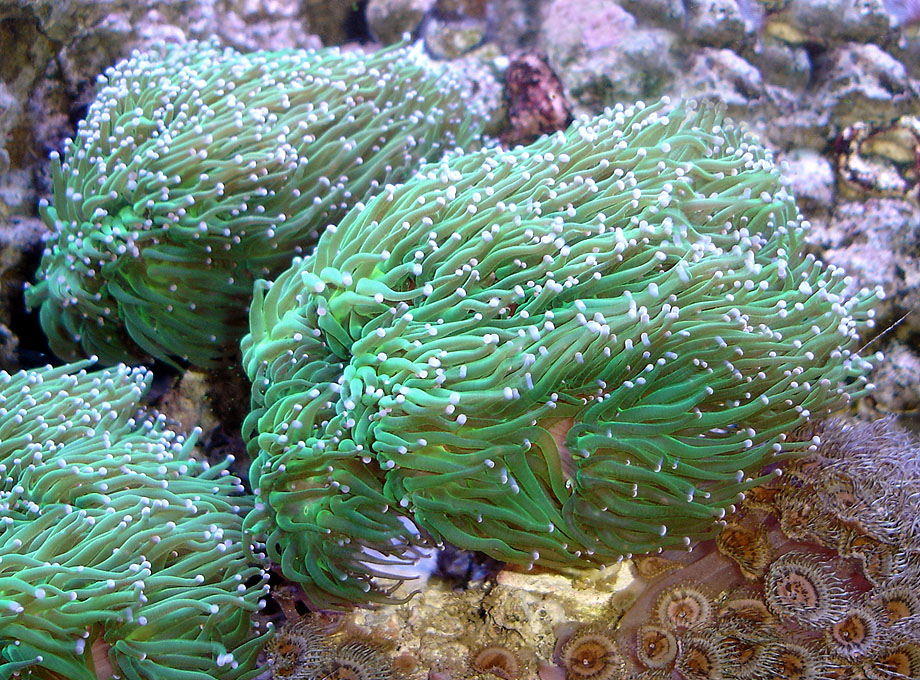
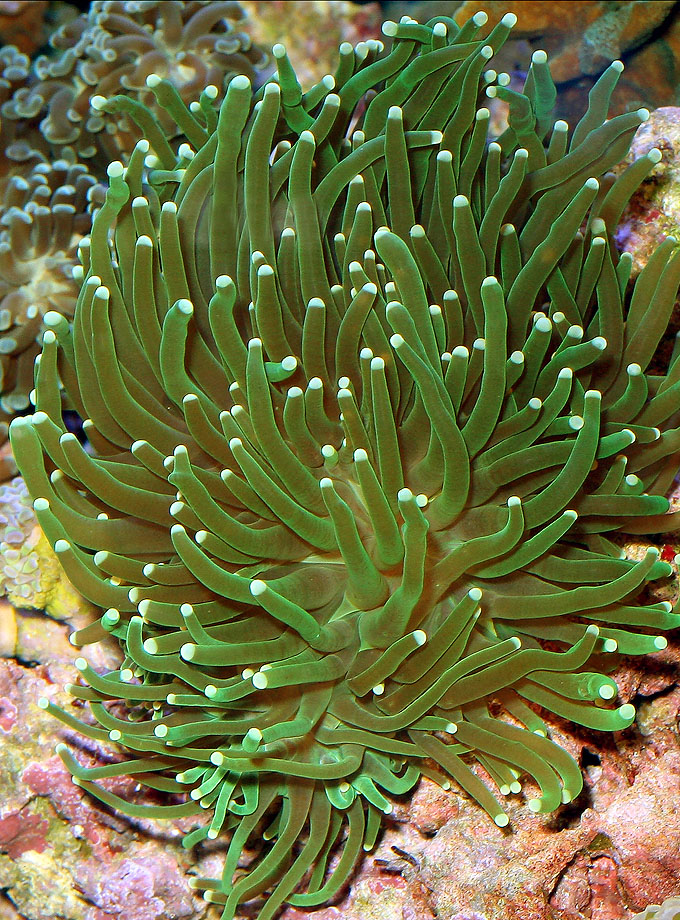
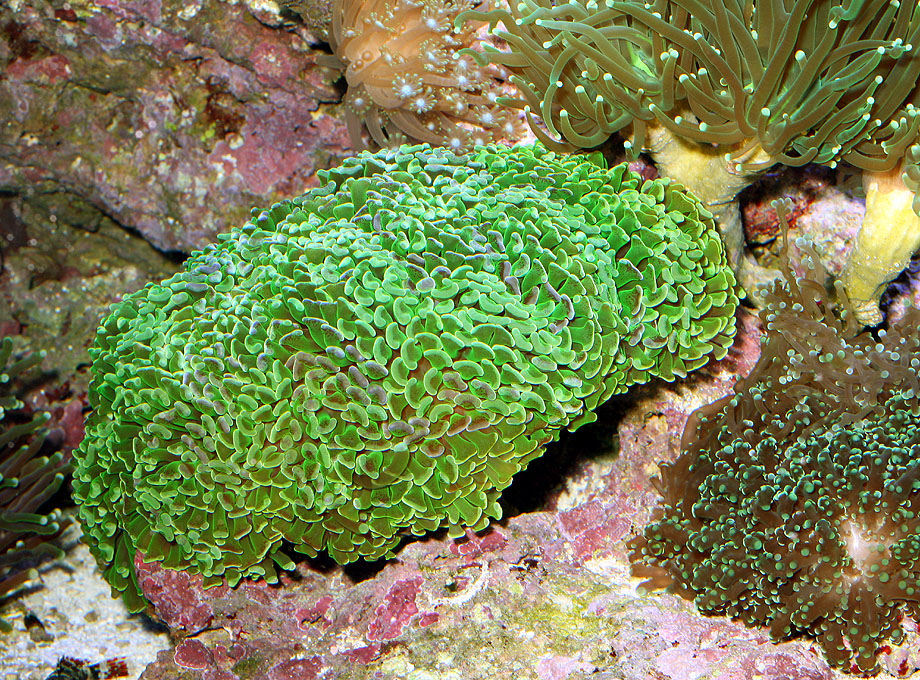

0 Comments